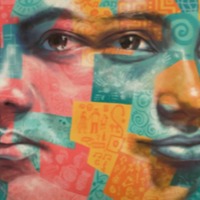
Abraham
There is an estimated 48,000 people living in modern slavery in Libya (GSI 2018). Libya is a major transit destination for migrants and refugees hoping to reach Europe by sea. Human trafficking networks have prospered amid lawlessness, created by the warring militias that have been fighting for control of territories since the toppling of Muammar Gaddafi in 2011. Highly organized trafficking and migrants smuggling networks that reach into Libya from Niger, Nigeria, Chad, Eritrea, Ethiopia, Somalia, Sudan, and other sub-Saharan states subject migrants to forced labor and forced prostitution through fraudulent recruitment, confiscation of identity and travel documents, withholding or non-payment of wages, debt bondage, and verbal, physical, and sexual abuse. In some cases, migrants reportedly pay smuggling fees to reach Tripoli, but once they cross the Libyan border they are sometimes abandoned in southern cities or the desert where they are susceptible to severe forms of abuse and human trafficking. Abraham chose to travel from Eritrea to Europe through smugglers, however he found himself trafficked by brokers and being locked inside a warehouse and held for ransom for over a year. After being released from the trafficker’s camp, he and two friends, Kidane, and Berhane, decided to cross the sea together. They were put out to sea in an old wooden boat that was leaking. They were three days at sea, with no food and no water to drink. Some of the passengers died. Today, the three friends are earnestly advising other people not to go on this dangerous journey. They say enough is enough, irregular travel through Libya should stop now.
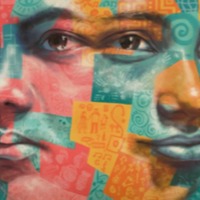
Kidane
There is an estimated 48,000 people living in modern slavery in Libya (GSI 2018). Libya is a major transit destination for migrants and refugees hoping to reach Europe by sea. Human trafficking networks have prospered amid lawlessness, created by the warring militias that have been fighting for control of territories since the toppling of Muammar Gaddafi in 2011. Highly organized trafficking and migrants smuggling networks that reach into Libya from Niger, Nigeria, Chad, Eritrea, Ethiopia, Somalia, Sudan, and other sub-Saharan states subject migrants to forced labor and forced prostitution through fraudulent recruitment, confiscation of identity and travel documents, withholding or non-payment of wages, debt bondage, and verbal, physical, and sexual abuse. In some cases, migrants reportedly pay smuggling fees to reach Tripoli, but once they cross the Libyan border they are sometimes abandoned in southern cities or the desert where they are susceptible to severe forms of abuse and human trafficking. Kidane traveled from Eritrea to Europe through smugglers, however he found himself trafficked by brokers and being locked inside a warehouse for two years. After being released from the trafficker’s camp, he and two friends, Abraham and Berhane, decided to cross the sea together. They were put out to sea in an old wooden boat that was leaking. They were three days at sea, with no food and no water to drink. Some of the passengers died. Today, the three friends are earnestly advising other people not to go on this dangerous journey. They say enough is enough, irregular travel through Libya should stop now.
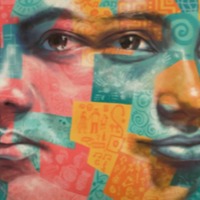
Berhane
There is an estimated 48,000 people living in modern slavery in Libya (GSI 2018). Libya is a major transit destination for migrants and refugees hoping to reach Europe by sea. Human trafficking networks have prospered amid lawlessness, created by the warring militias that have been fighting for control of territories since the toppling of Muammar Gaddafi in 2011. Highly organized trafficking and migrants smuggling networks that reach into Libya from Niger, Nigeria, Chad, Eritrea, Ethiopia, Somalia, Sudan, and other sub-Saharan states subject migrants to forced labor and forced prostitution through fraudulent recruitment, confiscation of identity and travel documents, withholding or non-payment of wages, debt bondage, and verbal, physical, and sexual abuse. In some cases, migrants reportedly pay smuggling fees to reach Tripoli, but once they cross the Libyan border they are sometimes abandoned in southern cities or the desert where they are susceptible to severe forms of abuse and human trafficking. Berhane chose to travel from Eritrea to Europe through smugglers, however he found himself trafficked by brokers and being locked inside for a year. After being released from the trafficker’s camp, he and two friends, Abraham and Kidane, decided to cross the sea together. They were put out to sea in an old wooden boat that was leaking. They were three days at sea, with no food and no water to drink. Some of the passengers died. Today, the three friends are earnestly advising other people not to go on this dangerous journey. They say enough is enough, irregular travel through Libya should stop now. Berhane’s narrative is part of a conversation with two other Eritrean men in a refugee reception centre in Malta, discussing their experience of taking the Libya route to Europe.
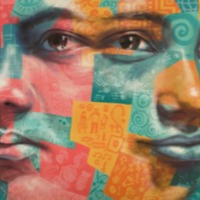
Andemariam
There is an estimated 48,000 people living in modern slavery in Libya (GSI 2018). Libya is a major transit destination for migrants and refugees hoping to reach Europe by sea. Human trafficking networks have prospered amid lawlessness, created by the warring militias that have been fighting for control of territories since the toppling of Muammar Gaddafi in 2011. Highly organized trafficking and migrants smuggling networks that reach into Libya from Niger, Nigeria, Chad, Eritrea, Ethiopia, Somalia, Sudan, and other sub-Saharan states subject migrants to forced labor and forced prostitution through fraudulent recruitment, confiscation of identity and travel documents, withholding or non-payment of wages, debt bondage, and verbal, physical, and sexual abuse. In some cases, migrants reportedly pay smuggling fees to reach Tripoli, but once they cross the Libyan border they are sometimes abandoned in southern cities or the desert where they are susceptible to severe forms of abuse and human trafficking. Andemariam, an Eritrean man, had been living and working in Sudan for over a decade when he was duped into taking the journey to Libya, where he’d been told there would be better employment opportunities. Andemariam and his friend were handed over to Libyan smugglers who imprisoned them in a store for two months before embarking on a difficult sea journey. Upon arrival in Italy, Andemariam had lost all his belongings, was sick, and was unable to find work. He later traveled to Germany to seek. medical attention At the time of the interview (2015) he was still waiting to hear about his refugee status.
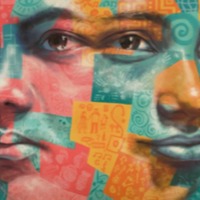
Abdirahman Hashi
There is an estimated 48,000 people living in modern slavery in Libya (GSI 2018). Libya is a major transit destination for migrants and refugees hoping to reach Europe by sea. Human trafficking networks have prospered amid lawlessness, created by the warring militias that have been fighting for control of territories since the toppling of Muammar Gaddafi in 2011. Highly organized trafficking and migrants smuggling networks that reach into Libya from Niger, Nigeria, Chad, Eritrea, Ethiopia, Somalia, Sudan, and other sub-Saharan states subject migrants to forced labor and forced prostitution through fraudulent recruitment, confiscation of identity and travel documents, withholding or non-payment of wages, debt bondage, and verbal, physical, and sexual abuse. In some cases, migrants reportedly pay smuggling fees to reach Tripoli, but once they cross the Libyan border they are sometimes abandoned in southern cities or the desert where they are susceptible to severe forms of abuse and human trafficking. Abdirahman was training to become a photographer in his hometown Hargeisa, Somalia when he started receiving pictures and messages from friends who had travelled irregularly to Europe. They were bragging about how life in Europe was wonderful and easy and Abdirahman felt an urge to go there himself. He and some friends decided to try their luck and contacted a smuggler. They had been promised the journey would be fast and easy. Already the first leg, across the sea to Yemen and from there to Sudan, brought a sharp reality check. Many fellow passengers died on the overloaded boat which had a capacity of 50 passengers but had 200 on board. On the second sea journey to Sudan the ship got lost and they ran out of food. When they finally reached the Sudanese shore, they were handed over to ruthless smugglers. They were put on buses and started a long drive through a hot desert with no food and only water mixed with petrol to drink, to prevent them feeling hungry. In Libya, their party was attacked by bandits, and they were taken to a traffickers’ camp where they were brutally beaten to force their families to pay ransom. When the ransom money had been paid, the camp was attacked by a rival gang and Abdirahman was kidnapped once again. At last, he managed to flee his tormentors and was rescued by police. He was put into detention and eventually offered repatriation, which he gratefully accepted.
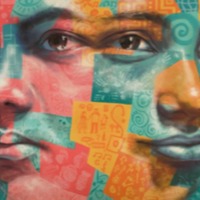
Nora
There are an estimated 145,000 people liing in conditions of modern slavery in Italy (GSI 2018). Italy is a destination, transit, and source country for women, children, and men subjected to sex trafficking and forced labour. Victims originate from Nigeria, Romania, Morocco, China, and other countries. Female victims are often subjected to sex trafficking in Italy after accepting promises of employment as dancers, singers, models, restaurant servers, or caregivers. Romanian and Albanian criminal groups force Eastern European women and girls into commercial sex. Nora’s family was poor and constantly worrying how to make ends meet. One day she met a woman who told her she could arrange a job for her abroad in Europe. Nora thought this was an opportunity to support her family and agreed. Before leaving Nigeria, she and others were required to go through a voodoo ceremony and swear an oath to pay back the woman for travel costs. The route went through Niger and Libya, as soon as they left Nigeria, the woman’s attitude changed. Nora and the other women she travelled with were trafficked into prostitution and forced to work in brothels along their journey in Niger, Libya, and Italy.
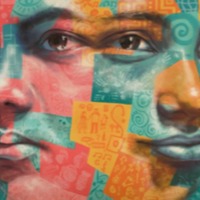
Suleiman
There is an estimated 48,000 people living in modern slavery in Libya (GSI 2018). Libya is a major transit destination for migrants and refugees hoping to reach Europe by sea. Human trafficking networks have prospered amid lawlessness, created by the warring militias that have been fighting for control of territories since the toppling of Muammar Gaddafi in 2011. Highly organized trafficking and migrants smuggling networks that reach into Libya from Niger, Nigeria, Chad, Eritrea, Ethiopia, Somalia, Sudan, and other sub-Saharan states subject migrants to forced labor and forced prostitution through fraudulent recruitment, confiscation of identity and travel documents, withholding or non-payment of wages, debt bondage, and verbal, physical, and sexual abuse. In some cases, migrants reportedly pay smuggling fees to reach Tripoli, but once they cross the Libyan border they are sometimes abandoned in southern cities or the desert where they are susceptible to severe forms of abuse and human trafficking. Suleiman travelled from Sudan to Egypt and from there was smuggled into Libya with his brother. Upon arrival they were held in a warehouse for three days before being released and going to Tobruk. Thinking they were being taken to Tripoli, they were shut inside a van with no view to the outside and arrived instead on a farm. A ransom of 15,000 Libyan dinars was demanded from each person for their release. They were stripped of their clothes, beaten, submitted to electrocutions and burnings while being weakened from hunger and thirst.
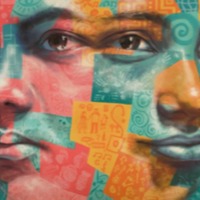
Vanessa
There is an estimated 48,000 people living in modern slavery in Libya (GSI 2018). Libya is a major transit destination for migrants and refugees hoping to reach Europe by sea. Human trafficking networks have prospered amid lawlessness, created by the warring militias that have been fighting for control of territories since the toppling of Muammar Gaddafi in 2011. Highly organized trafficking and migrants smuggling networks that reach into Libya from Niger, Nigeria, Chad, Eritrea, Ethiopia, Somalia, Sudan, and other sub-Saharan states subject migrants to forced labor and forced prostitution through fraudulent recruitment, confiscation of identity and travel documents, withholding or non-payment of wages, debt bondage, and verbal, physical, and sexual abuse. In some cases, migrants reportedly pay smuggling fees to reach Tripoli, but once they cross the Libyan border they are sometimes abandoned in southern cities or the desert where they are susceptible to severe forms of abuse and human trafficking. In Nigeria, Vanessa struggled to house and feed herself and her three children after being thrown out of their home by her abusive husband. She worked as a hawker, selling fruit, and as a hairdresser, but worried constantly about money. Then a friend mentioned a sister in Italy with a hairdressing salon and recommended Vanessa to work there. She was told it would be an easy journey through Libya, however after arriving in Tripoli, Vanessa and her fellow travellers were housed in a smuggler’s compound when a fight broke out among neighbourhood gangs. During this time, her baby developed a fever and became critically ill, dying shortly afterward. She set off from Tripoli on a smuggler’s boat headed for Italy, but the boat was captured by bandits who took them back to Libya and held the passengers for ransom. Vanessa’s friend's sister in Italy paid for her release, but she was unable to make it to Italy. When she tried for a second time, she was caught by the Libyan Coast Guard, brought back, and imprisoned. A Ghanaian man bailed her out of prison only to sell her to a brothel where she had to work as a prostitute to pay off her debt.
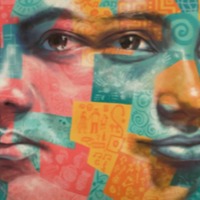
Yasmiin
There is an estimated 48,000 people living in modern slavery in Libya (GSI 2018). Libya is a major transit destination for migrants and refugees hoping to reach Europe by sea. Human trafficking networks have prospered amid lawlessness, created by the warring militias that have been fighting for control of territories since the toppling of Muammar Gaddafi in 2011. Highly organized trafficking and migrants smuggling networks that reach into Libya from Niger, Nigeria, Chad, Eritrea, Ethiopia, Somalia, Sudan, and other sub-Saharan states subject migrants to forced labor and forced prostitution through fraudulent recruitment, confiscation of identity and travel documents, withholding or non-payment of wages, debt bondage, and verbal, physical, and sexual abuse. In some cases, migrants reportedly pay smuggling fees to reach Tripoli, but once they cross the Libyan border they are sometimes abandoned in southern cities or the desert where they are susceptible to severe forms of abuse and human trafficking. Yasmiin had a small restaurant in her home town in Somalia. One day she was kidnapped by some men and raped. After that she became ostracised in her community, people stopped talking to her and stopped coming to her restaurant. She could not stay there any longer and decided to leave Somalia, taking the smuggler route through Yemen and Sudan to Libya, hoping to reach Europe. She was imprisoned in Libya and eventually evacuated by UNHCR to Niger where she is waiting for re-settlement.
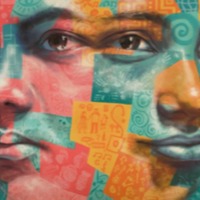
Yehia
Egypt is a source, transit and destination country for women and children trafficked for the purposes of forced labour and sexual exploitation. The local dimension of human trafficking includes child labour, the sexual exploitation of children, the sale of human organs, and various forms of prostitution. Children are forced into domestic service, street begging drug trafficking, quarrying, and agricultural work in the country. NGOs report the lack of economic and educational opportunities cause family members to subject women and girls to sex trafficking to supplement family income, and in some cases women and girls are raped to coerce or forced them into prostitution. Child sex tourism occurs in Cairo, Alexandira, and Luxor and Egyptian women and girls are purchased for 'temporary' or 'summer marriages' for the purpose of commercial sex, including sex trafficking, and forced labour. Egyptian adults are subjected to forced labour in construction, agriculture, domestic work, and low-paying service jobs in the region. Refugees from Syria, Sudan, South Sudan, and Yemen who have settled in Egypt in Egypt are also at an increased risk of trafficking, forced labour, forced marriage, and sexual exploitation. When the civil war in Yemen erupted in 2015, Yehia’s parents advised him to flee to Egypt to avoid conscription by one of the warring factions. Having arrived in Cairo via Sudan, Yehia contacted a smuggler who promised to take him across the sea to Italy. He was taken to a beach near Alexandria with other travellers and boarded a small boat, but the smugglers turned out to be gangsters who robbed the passengers and were going to put them ashore when the Coast Guard arrived and rescued them. Yehia was sent back to Sudan and tried a second time to get to Italy, but this time he was kidnapped and detained on a farm in the Egyptian desert.
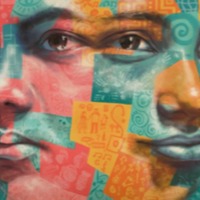
Sami
There is an estimated 48,000 people living in modern slavery in Libya (GSI 2018). Libya is a major transit destination for migrants and refugees hoping to reach Europe by sea. Human trafficking networks have prospered amid lawlessness, created by the warring militias that have been fighting for control of territories since the toppling of Muammar Gaddafi in 2011. Highly organized trafficking and migrants smuggling networks that reach into Libya from Niger, Nigeria, Chad, Eritrea, Ethiopia, Somalia, Sudan, and other sub-Saharan states subject migrants to forced labour and forced prostitution through fraudulent recruitment, confiscation of identity and travel documents, withholding or non-payment of wages, debt bondage, and verbal, physical, and sexual abuse. In some cases, migrants reportedly pay smuggling fees to reach Tripoli, but once they cross the Libyan border they are sometimes abandoned in southern cities or the desert where they are susceptible to severe forms of abuse and human trafficking. Sami left Eritrea when he was 15 years old. He travelled to Ethiopia and from there he made it to Sudan. From Sudan, he was smuggled into Libya via Chad, after paying smugglers $1,500. On the Libyan border, he was caught and told by the Libyans he had been sold by the Chadian smugglers and needed to pay more money.
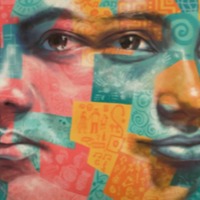
Peter
Despite having the lowest regional prevalence of modern slavery in the world, Europe remains a destination, and to a lesser extent, a source region for the exploitation of men, women and children in forced labour and commercial sexual exploitation. According to the most recent Eurostat findings, European Union (EU) citizens account for 65 percent of identified trafficked victims within Europe. These individuals mostly originate from Eastern Europe, including Romania, Bulgaria, Lithuania and Slovakia. In Albania and Bosnia and Herzegovina, the European Parliament has identified corruption and the judicial system as reform challenges towards accession talks within the EU. Peter ran away from home after being abused by his father. After living on the streets for a year, his uncle arranged for him to leave the country. Peter was sold by his uncle and smuggled across Europe against his will.
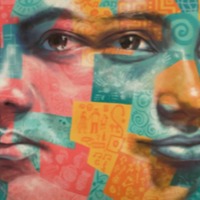
Winta
There are an estimated 518,000 people living in modern slavery in Egypt, 465,000 in Sudan and an estimated 451,000 in Eritrea (GSI 2018). Since 2006 tens of thousands of Eritreans fleeing widespread human rights abuses and destitution have ended up in Egypt’s Sinai Peninsula. Until 2010, they passed through Sinai voluntarily and generally without any problems and crossed in to Israel. However, since then, Sudanese traffickers have kidnapped Eritreans in eastern Sudan and sold them to Egyptian traffickers in Sinai who have subjected at least hundreds to violence in order to extort large sums of money from their relatives. Winta* escaped Eritrea to Sudan for the second time in 2012. However, she was kidnapped and held by smugglers, subjected to sexual abuse daily. Winta was held until her family paid a ransom to free her.
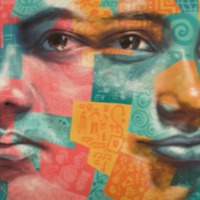
Fnan
There are an estimated 518,000 people living in modern slavery in Egypt, 465,000 in Sudan and an estimated 451,000 in Eritrea (GSI 2018). Since 2006 tens of thousands of Eritreans fleeing widespread human rights abuses and destitution have ended up in Egypt’s Sinai Peninsula. Until 2010, they passed through Sinai voluntarily and generally without any problems and crossed in to Israel. However, since then, Sudanese traffickers have kidnapped Eritreans in eastern Sudan and sold them to Egyptian traffickers in Sinai who have subjected at least hundreds to violence in order to extort large sums of money from their relatives. Fnan* paid money to be smuggled in to Israel through the Egyptian border, however on her way was physically abused and raped, kept captive in Sinai for six months until she paid a ransom.
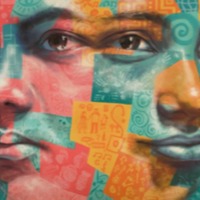
Hyiab
There are an estimated 518,000 people living in modern slavery in Egypt, 465,000 in Sudan and an estimated 451,000 in Eritrea (GSI 2018). Since 2006 tens of thousands of Eritreans fleeing widespread human rights abuses and destitution have ended up in Egypt’s Sinai Peninsula. Until 2010, they passed through Sinai voluntarily and generally without any problems and crossed in to Israel. However, since then, Sudanese traffickers have kidnapped Eritreans in eastern Sudan and sold them to Egyptian traffickers in Sinai who have subjected at least hundreds to violence in order to extort large sums of money from their relatives. Hyiab* paid to be smuggled from Eritrea to Israel, however on the way she was held captive for eleven months, tied up and beaten. She was only able to escape after paying the smuggler’s ransom.
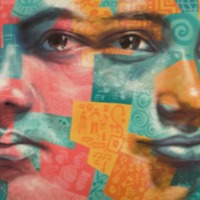
Madihah
There are an estimated 518,000 people living in modern slavery in Egypt, 465,000 in Sudan and an estimated 451,000 in Eritrea (GSI 2018). Since 2006 tens of thousands of Eritreans fleeing widespread human rights abuses and destitution have ended up in Egypt’s Sinai Peninsula. Until 2010, they passed through Sinai voluntarily and generally without any problems and crossed in to Israel. However, since then, Sudanese traffickers have kidnapped Eritreans in eastern Sudan and sold them to Egyptian traffickers in Sinai who have subjected at least hundreds to violence in order to extort large sums of money from their relatives. Madihah* defected from the Eritrean army and was kidnapped by smuggler at the Sudan border and then taken to Sinai. Madihah was subjected to physical and sexual abuse, and forced to work as a cleaner.
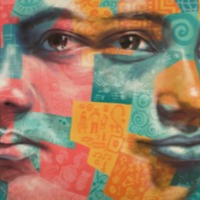
Lemlem
There are an estimated 518,000 people living in modern slavery in Egypt, 465,000 in Sudan and an estimated 451,000 in Eritrea (GSI 2018). Since 2006 tens of thousands of Eritreans fleeing widespread human rights abuses and destitution have ended up in Egypt’s Sinai Peninsula. Until 2010, they passed through Sinai voluntarily and generally without any problems and crossed in to Israel. However, since then, Sudanese traffickers have kidnapped Eritreans in eastern Sudan and sold them to Egyptian traffickers in Sinai who have subjected at least hundreds to violence in order to extort large sums of money from their relatives. Lemlem* left Eritrea after defecting from the army and planned to travel to Sudan. However, she was kidnapped on the way and transferred to Sinai. Lemlem was subjected to physical abuse and torture until she paid them a ransom to release her.
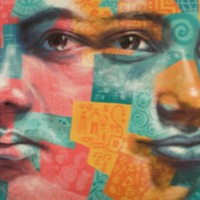
Awate
There are an estimated 518,000 people living in modern slavery in Egypt, 465,000 in Sudan and an estimated 451,000 in Eritrea (GSI 2018). Since 2006 tens of thousands of Eritreans fleeing widespread human rights abuses and destitution have ended up in Egypt’s Sinai Peninsula. Until 2010, they passed through Sinai voluntarily and generally without any problems and crossed in to Israel. However, since then, Sudanese traffickers have kidnapped Eritreans in eastern Sudan and sold them to Egyptian traffickers in Sinai who have subjected at least hundreds to violence in order to extort large sums of money from their relatives. Awate* was kidnapped on the way to Israel from Eritrea. She was kept for two weeks in Sudan and then transferred to Sinai where she was subjected to physical and sexual abuse. She was finally released after her family paid the smuggler’s ransom.
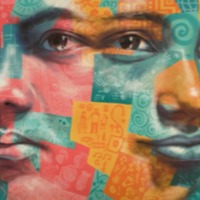
Arsema
There are an estimated 518,000 people living in modern slavery in Egypt, 465,000 in Sudan and an estimated 451,000 in Eritrea (GSI 2018). Since 2006 tens of thousands of Eritreans fleeing widespread human rights abuses and destitution have ended up in Egypt’s Sinai Peninsula. Until 2010, they passed through Sinai voluntarily and generally without any problems and crossed in to Israel. However, since then, Sudanese traffickers have kidnapped Eritreans in eastern Sudan and sold them to Egyptian traffickers in Sinai who have subjected at least hundreds to violence in order to extort large sums of money from their relatives. Arsema* was kidnapped in Sudan on her way to Israel and later transferred to Sinai. She was subjected to physical abuse and rape, only being released after paying the smuggler’s ransom.
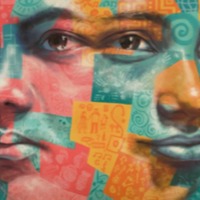
Semira
There are an estimated 518,000 people living in modern slavery in Egypt, 465,000 in Sudan and an estimated 451,000 in Eritrea (GSI 2018). Since 2006 tens of thousands of Eritreans fleeing widespread human rights abuses and destitution have ended up in Egypt’s Sinai Peninsula. Until 2010, they passed through Sinai voluntarily and generally without any problems and crossed in to Israel. However, since then, Sudanese traffickers have kidnapped Eritreans in eastern Sudan and sold them to Egyptian traffickers in Sinai who have subjected at least hundreds to violence in order to extort large sums of money from their relatives. Semira* paid to be smuggled in to Israel, however on her way she was chained up and tortured.